![MLS Insight: Statistics Galore on RMLSweb]()
by RMLS Communication Department | Aug 29, 2014
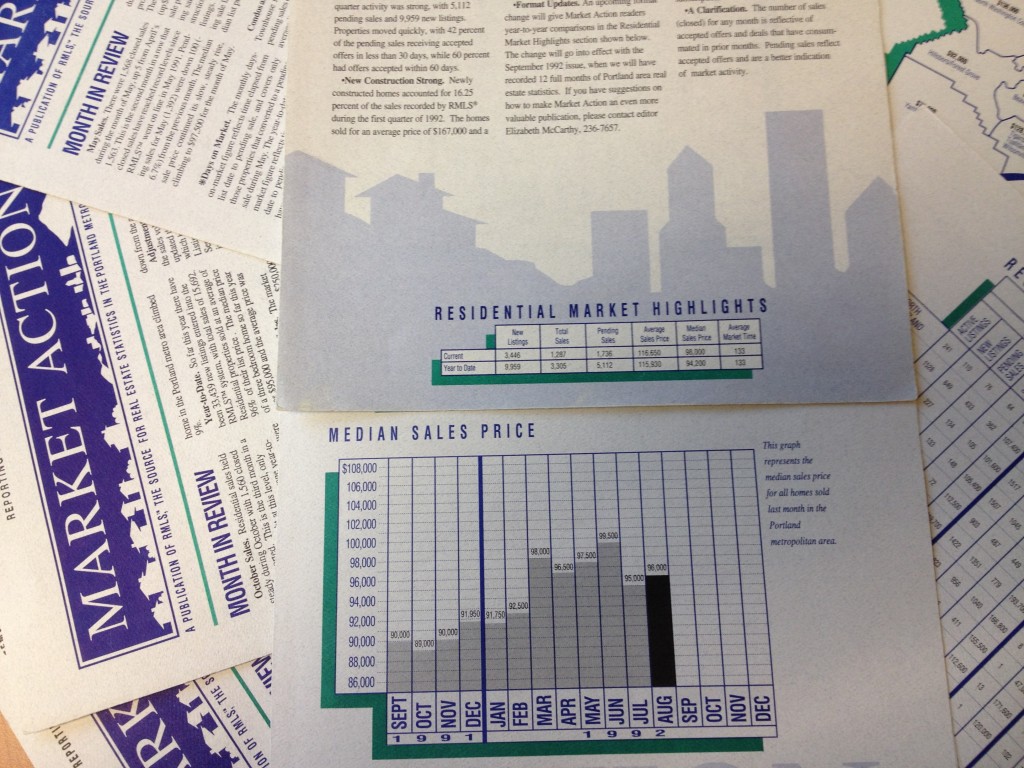
This post is part of MLS Insight, a series about how things work at RMLS™.
In our early years, RMLS™ leadership had the goal of positioning RMLS™ as the primary source for information about the residential real estate market—so statistical information has always been a priority. Then and now, RMLS™ provides compiled data and directs media to working REALTORS® for interpretation and projections.
In other words, our expertise is the WHAT, and we leave the WHY to industry professionals who have access to the buyers and sellers whose activity underpins the data on sales, prices, and listings.
Market Action
The first issue of our monthly statistical newsletter, Market Action, was published as four printed pages in March 1992. Today Market Action is 69 pages long and covers all the market areas we serve. Next year, we will be expanding coverage to include separate stats for new construction and existing homes. Watch for a survey question in our Annual Subscriber Satisfaction Survey to weigh in on the most important data to include, or leave a comment below.
Market Trends and Market Stats
To explore the other statistics reports that RMLS™ has to offer, head to the Statistics tab on the RMLSweb menu bar.

RMLSweb also features video tutorials on how to use both Market Trends and Market Stats. (You can find these and others on RMLSweb by clicking on Training Tutorials under the Toolkit menu.)
Market Trends allows searching by geography (area number, city, ZIP code) and a few other criteria such as bedrooms, year built, lot size, etc. The resulting report produces not only a summary of data by month within the range you select, but also six graphs like the one below that are a click away from copying for your use in your own CMAs or newsletters.
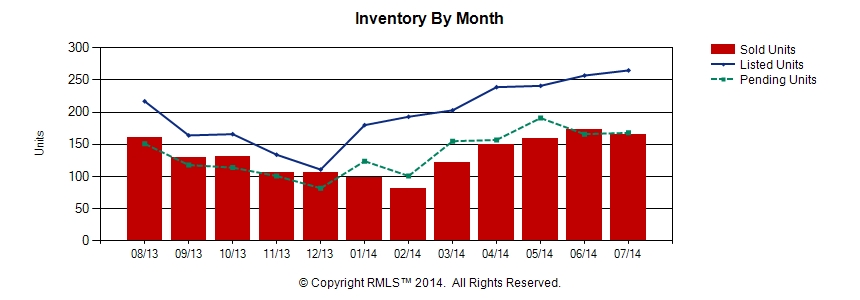
Market Stats provides several reports. The Comparables Report has several additional graphs which depict sales data by sold terms and number of bedrooms. (See below for the type of info available in the Comparables Report.) The Dollar Value by Area and Inventory Reports are strictly data reports that give a very streamlined overview of market areas.

Home Sales Report
In addition to these dynamic reports which pull data according to criteria you select, RMLS™ also provides static reports under the Statistics menu. The Home Sales Report has information as early as 2001. Since July 2011, these reports have presented information for new construction—both separate from existing and combined.
Statistical Summaries
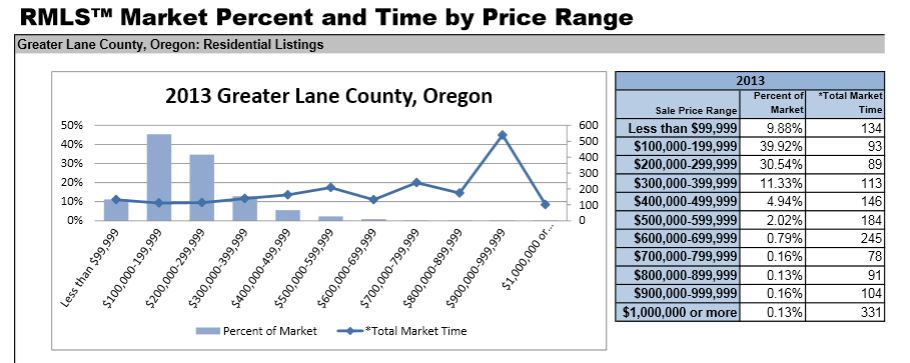
Finally, the Statistical Summaries compile years worth of Market Action historical data into a few pages and provide up to nine annual snapshots of various aspects of the residential real estate market in all our market areas. Access them under the Statistics menu on RMLSweb.
As you can see, RMLS™ takes stats seriously! If you would like to learn more about how to use stats in your business, call RMLS™ Training at (503) 236-7657 to get more information.
Thanks for taking this brief tour highlighting some of the statistical information available from RMLS™. Next month we will talk about envisioning an MLS without area numbers. If you have any questions you would like to have answered about how things work at RMLS™, I encourage you to post a comment to this blog.
![MLS Insight: Statistics Galore on RMLSweb]()
by RMLS Communication Department | Jun 25, 2014
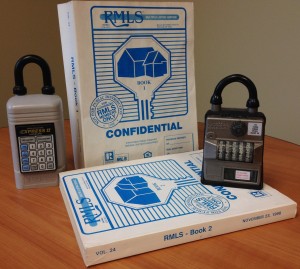 This post is part of MLS Insight, a series about governance issues at RMLS™.
This post is part of MLS Insight, a series about governance issues at RMLS™.
RMLS™ was created when representatives from four Boards of REALTORS® in the Portland metro area decided to form a service that was an alternative to a broker-owned multiple listing service in business since the 1970s. The Articles of Incorporation were filed on August 3, 1990, establishing RMLS™ as a 501C for-profit corporation.
Membership
The first RMLS™ listings went live in May 1991. Within a few short weeks, 3,433 area REALTORS® had subscribed to the fledgling MLS. This was 75% of the possible membership, and RMLS™ never looked back. Membership grew steadily to a high of almost 15,000 subscribers in 2007 and then fell in concert with the recession and REALTOR® membership to a low of just over 10,000 subscribers in January 2013. As the market has improved, subscriber numbers are rising again, and sit at about 11,000 midway through 2014.
Listings and Lockboxes
RMLS™ was computerized and offered a lockbox from the beginning. A staple of a 1990s MLS was “The Book” (above), a bi-weekly tome of active listings with a quarterly comparable book. As personal computing and connectivity became the norm, demand for the books waned, and they became optional in 1997. The last book printed was the 1999 4th Quarter Comparable Book.
The first lockbox was a mechanical system made by Multacc, which came with the following tip: Carry a can of silicone spray with you in case your key gets stuck in a dirty lockbox. This system was replaced in 1995 by a series of Supra electronic systems. After 18 years with Supra, RMLS™ switched to the SentriLock system in 2013.
Areas of Coverage
In the beginning, RMLS™ served only the five-county Portland metropolitan area in Oregon. The Douglas County Board of REALTORS® initiated discussions with RMLS™ early in 1998 to see if service could be extended to that area. Service to both Douglas and Coos Counties in Oregon was added later that year. The following year a merger with the Clark County, Washington MLS was finalized, bringing membership over the 7,000 mark. Service to Lane County followed in 2001. Curry County and the Mid-Columbia region in Oregon and Washington joined in 2005, with the Columbia Basin and Baker and Union Counties following suit in 2007 and Wallowa County in 2008.
Harnessing the Power of the Internet
RMLS™ utilized a vended dial-up system from Interealty called Stellar as the main MLS system until 2002. Development on RMLSweb began in 1998, and the first version of RMLSweb was rolled out early in 1999 as a parallel, search-only, internet-accessible system. Originally developed by a vendor, the code for RMLSweb was acquired in 2001 and development moved in-house. By the end of the following year, migration from the legacy system was complete and RMLSweb became the sole system, supported and extended entirely by in-house programmers and IT personnel.
RMLS™ first sent listings to the internet in 1996. The first internet policy to govern internet display of listings was crafted in 1998, establishing the RMLS™ philosophy that the broker should determine the destination of their own listings and setting the stage for today’s busy internet world of IDX, VOW, and syndication.
Communicating with Subscribers
RMLS™ had a goal of good communication with brokers and subscribers and outstanding customer service from the early days. The Training Department’s origins date to 1994, while the first Help Desk calls were taken by RMLS™ staff in 1996. (Prior to that time, the system vendor handled Tech Support.) A Technology/Trade Fair has been held annually since 1994. Today, our technicians can chat online and webinars have replaced many classroom offerings.
RMLS™ implemented the communication technology of the day as it became cost-effective. Broadcast faxes to brokerages started in 1993, an early predecessor to the current weekly email “RMLS™ Weekly Report.” In 1996, the REALTORS® Fax Service provided a way for subscribers to obtain RMLS™ information and documents 24 hours a day, seven days a week. Today, the Forms and Documents menu of RMLSweb is the mature version of that idea.
It’s difficult to encompass 23 years in a few words, but RMLS™ has changed greatly along with the real estate community and the world at large. MLS staff had one computer to conduct business in 1991, and were excited to have a 24-dot matix printer. Although a fledgling internet existed in 1991, most of us were unaware of it, and it took a largish room to house the computing power of a smartphone.
Next month we will talk about resources—how to find information you need to enhance your MLS experience online and from our staff. If you have any questions you would like to have answered about RMLS™ governance or operation, I encourage you to post a comment to this blog.
![MLS Insight: Statistics Galore on RMLSweb]()
by RMLS Communication Department | Jun 25, 2014
 This post is part of MLS Insight, a series about governance issues at RMLS.
This post is part of MLS Insight, a series about governance issues at RMLS.
RMLS was created when representatives from four Boards of REALTORS® in the Portland metro area decided to form a service that was an alternative to a broker-owned multiple listing service in business since the 1970s. The Articles of Incorporation were filed on August 3, 1990, establishing RMLS as a 501C for-profit corporation.
Membership
The first RMLS listings went live in May 1991. Within a few short weeks, 3,433 area REALTORS® had subscribed to the fledgling MLS. This was 75% of the possible membership, and RMLS never looked back. Membership grew steadily to a high of almost 15,000 subscribers in 2007 and then fell in concert with the recession and REALTOR® membership to a low of just over 10,000 subscribers in January 2013. As the market has improved, subscriber numbers are rising again, and sit at about 11,000 midway through 2014.
Listings and Lockboxes
RMLS was computerized and offered a lockbox from the beginning. A staple of a 1990s MLS was “The Book” (above), a bi-weekly tome of active listings with a quarterly comparable book. As personal computing and connectivity became the norm, demand for the books waned, and they became optional in 1997. The last book printed was the 1999 4th Quarter Comparable Book.
The first lockbox was a mechanical system made by Multacc, which came with the following tip: Carry a can of silicone spray with you in case your key gets stuck in a dirty lockbox. This system was replaced in 1995 by a series of Supra electronic systems. After 18 years with Supra, RMLS switched to the SentriLock system in 2013.
Areas of Coverage
In the beginning, RMLS served only the five-county Portland metropolitan area in Oregon. The Douglas County Board of REALTORS® initiated discussions with RMLS early in 1998 to see if service could be extended to that area. Service to both Douglas and Coos Counties in Oregon was added later that year. The following year a merger with the Clark County, Washington MLS was finalized, bringing membership over the 7,000 mark. Service to Lane County followed in 2001. Curry County and the Mid-Columbia region in Oregon and Washington joined in 2005, with the Columbia Basin and Baker and Union Counties following suit in 2007 and Wallowa County in 2008.
Harnessing the Power of the Internet
RMLS utilized a vended dial-up system from Interealty called Stellar as the main MLS system until 2002. Development on RMLSweb began in 1998, and the first version of RMLSweb was rolled out early in 1999 as a parallel, search-only, internet-accessible system. Originally developed by a vendor, the code for RMLSweb was acquired in 2001 and development moved in-house. By the end of the following year, migration from the legacy system was complete and RMLSweb became the sole system, supported and extended entirely by in-house programmers and IT personnel.
RMLS™ first sent listings to the internet in 1996. The first internet policy to govern internet display of listings was crafted in 1998, establishing the RMLS philosophy that the broker should determine the destination of their own listings and setting the stage for today’s busy internet world of IDX, VOW, and syndication.
Communicating with Subscribers
RMLS had a goal of good communication with brokers and subscribers and outstanding customer service from the early days. The Training Department’s origins date to 1994, while the first Help Desk calls were taken by RMLS staff in 1996. (Prior to that time, the system vendor handled Tech Support.) A Technology/Trade Fair has been held annually since 1994. Today, our technicians can chat online and webinars have replaced many classroom offerings.
RMLS implemented the communication technology of the day as it became cost-effective. Broadcast faxes to brokerages started in 1993, an early predecessor to the current weekly email “RMLS Weekly Report.” In 1996, the REALTORS® Fax Service provided a way for subscribers to obtain RMLS information and documents 24 hours a day, seven days a week. Today, the Forms and Documents menu of RMLSweb is the mature version of that idea.
It’s difficult to encompass 23 years in a few words, but RMLS has changed greatly along with the real estate community and the world at large. MLS staff had one computer to conduct business in 1991, and were excited to have a 24-dot matix printer. Although a fledgling internet existed in 1991, most of us were unaware of it, and it took a largish room to house the computing power of a smartphone.
Next month we will talk about resources—how to find information you need to enhance your MLS experience online and from our staff. If you have any questions you would like to have answered about RMLS governance or operation, I encourage you to post a comment to this blog.
![MLS Insight: Statistics Galore on RMLSweb]()
by RMLS Communication Department | Jun 25, 2014
 This post is part of MLS Insight, a series about governance issues at RMLS™.
This post is part of MLS Insight, a series about governance issues at RMLS™.
RMLS™ was created when representatives from four Boards of REALTORS® in the Portland metro area decided to form a service that was an alternative to a broker-owned multiple listing service in business since the 1970s. The Articles of Incorporation were filed on August 3, 1990, establishing RMLS™ as a 501C for-profit corporation.
Membership
The first RMLS™ listings went live in May 1991. Within a few short weeks, 3,433 area REALTORS® had subscribed to the fledgling MLS. This was 75% of the possible membership, and RMLS™ never looked back. Membership grew steadily to a high of almost 15,000 subscribers in 2007 and then fell in concert with the recession and REALTOR® membership to a low of just over 10,000 subscribers in January 2013. As the market has improved, subscriber numbers are rising again, and sit at about 11,000 midway through 2014.
Listings and Lockboxes
RMLS™ was computerized and offered a lockbox from the beginning. A staple of a 1990s MLS was “The Book” (above), a bi-weekly tome of active listings with a quarterly comparable book. As personal computing and connectivity became the norm, demand for the books waned, and they became optional in 1997. The last book printed was the 1999 4th Quarter Comparable Book.
The first lockbox was a mechanical system made by Multacc, which came with the following tip: Carry a can of silicone spray with you in case your key gets stuck in a dirty lockbox. This system was replaced in 1995 by a series of Supra electronic systems. After 18 years with Supra, RMLS™ switched to the SentriLock system in 2013.
Areas of Coverage
In the beginning, RMLS™ served only the five-county Portland metropolitan area in Oregon. The Douglas County Board of REALTORS® initiated discussions with RMLS™ early in 1998 to see if service could be extended to that area. Service to both Douglas and Coos Counties in Oregon was added later that year. The following year a merger with the Clark County, Washington MLS was finalized, bringing membership over the 7,000 mark. Service to Lane County followed in 2001. Curry County and the Mid-Columbia region in Oregon and Washington joined in 2005, with the Columbia Basin and Baker and Union Counties following suit in 2007 and Wallowa County in 2008.
Harnessing the Power of the Internet
RMLS™ utilized a vended dial-up system from Interealty called Stellar as the main MLS system until 2002. Development on RMLSweb began in 1998, and the first version of RMLSweb was rolled out early in 1999 as a parallel, search-only, internet-accessible system. Originally developed by a vendor, the code for RMLSweb was acquired in 2001 and development moved in-house. By the end of the following year, migration from the legacy system was complete and RMLSweb became the sole system, supported and extended entirely by in-house programmers and IT personnel.
RMLS™ first sent listings to the internet in 1996. The first internet policy to govern internet display of listings was crafted in 1998, establishing the RMLS™ philosophy that the broker should determine the destination of their own listings and setting the stage for today’s busy internet world of IDX, VOW, and syndication.
Communicating with Subscribers
RMLS™ had a goal of good communication with brokers and subscribers and outstanding customer service from the early days. The Training Department’s origins date to 1994, while the first Help Desk calls were taken by RMLS™ staff in 1996. (Prior to that time, the system vendor handled Tech Support.) A Technology/Trade Fair has been held annually since 1994. Today, our technicians can chat online and webinars have replaced many classroom offerings.
RMLS™ implemented the communication technology of the day as it became cost-effective. Broadcast faxes to brokerages started in 1993, an early predecessor to the current weekly email “RMLS™ Weekly Report.” In 1996, the REALTORS® Fax Service provided a way for subscribers to obtain RMLS™ information and documents 24 hours a day, seven days a week. Today, the Forms and Documents menu of RMLSweb is the mature version of that idea.
It’s difficult to encompass 23 years in a few words, but RMLS™ has changed greatly along with the real estate community and the world at large. MLS staff had one computer to conduct business in 1991, and were excited to have a 24-dot matix printer. Although a fledgling internet existed in 1991, most of us were unaware of it, and it took a largish room to house the computing power of a smartphone.
Next month we will talk about resources—how to find information you need to enhance your MLS experience online and from our staff. If you have any questions you would like to have answered about RMLS™ governance or operation, I encourage you to post a comment to this blog.
![MLS Insight: Statistics Galore on RMLSweb]()
by RMLS Communication Department | May 29, 2014
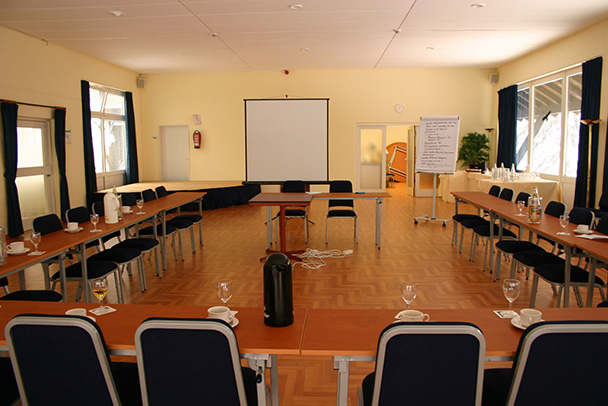
This post is part of MLS Insight, a series about governance issues at RMLS™.
In previous MLS Insight posts, I covered the general governance of RMLS™ including our shareholders, Board of Directors, and standing committees. The Service Advisory Committee (SAC) is a topic that deserves a closer look.
When RMLS™ began serving areas outside the Portland metro area where our shareholder REALTOR® associations were located, we wanted to find a way to make sure that those subscribers’ voices could be heard. In 2000, our Articles of Incorporation and Bylaws were changed to establish the Service Advisory Committee. The Articles of Incorporation clearly define SAC’s purpose as “identifying the concerns of those who subscribe to the corporation’s service but who are not members of shareholders…”
Currently 16 REALTOR® associations appoint representatives to serve on SAC. The chairman of SAC automatically takes a seat on the RMLS™ Board of Directors, and SAC also appoints one additional director. SAC directors have full and identical rights and responsibilities as shareholder directors.
Our current Service Advisory Committee directors have both made many contributions to both RMLS™ and the broader real estate communities. Cory Neu served as the 2011 Chairman of the RMLS™ Board and a total of five years on the Executive Committee representing SAC from the Eugene Association of REALTORS®. Our current Treasurer, Lori Palermo, represents SAC from the Springfield Board of REALTORS® and has served on SAC since its inception in 2000. I asked them to provide their own insider views on the Service Advisory Committee for this post.
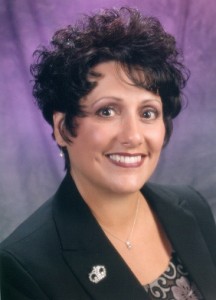
“I have had the pleasure of serving on the Service Advisory Committee since its inception. I especially appreciate the avenue that the committee provides for bringing questions, concerns, and issues of members across the state to the RMLS™ Board of Directors. Several suggestions and enhancements that have come from SAC have been implemented and are in use today.” –Lori Palermo
 “I’ve served in several capacities for my local and state associations, and having the opportunity to chair the RMLS™ Service Advisory Committee for the last 11 years has been the most rewarding in my real estate career. In that time, the SAC has brought many recommendations to the board and staff, from rules and regulations to RMLSweb functionality. Those things directly effect our profession on a very real and direct level.” –Cory Neu
“I’ve served in several capacities for my local and state associations, and having the opportunity to chair the RMLS™ Service Advisory Committee for the last 11 years has been the most rewarding in my real estate career. In that time, the SAC has brought many recommendations to the board and staff, from rules and regulations to RMLSweb functionality. Those things directly effect our profession on a very real and direct level.” –Cory Neu
Next month we will give a brief history of RMLS™. If you have any questions you would like to have answered about RMLS™ governance or operation, I encourage you to post a comment to this blog.








